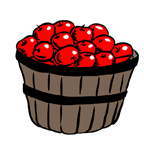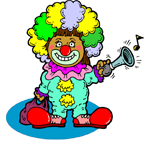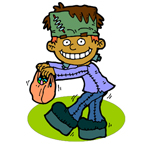 Lately, I’ve been seeing more and more posts on social media asking for testing suggestions for students who exhibit subtle language-based difficulties. Many of these children are typically referred for initial assessments or reassessments as part of advocate/attorney involved cases, while others are being assessed due to the parental insistence that something “is not quite right” with their language and literacy abilities, even in the presence of “good grades.” Continue reading Comprehensive Assessment of Elementary Aged Children with Subtle Language and Literacy Deficits
Lately, I’ve been seeing more and more posts on social media asking for testing suggestions for students who exhibit subtle language-based difficulties. Many of these children are typically referred for initial assessments or reassessments as part of advocate/attorney involved cases, while others are being assessed due to the parental insistence that something “is not quite right” with their language and literacy abilities, even in the presence of “good grades.” Continue reading Comprehensive Assessment of Elementary Aged Children with Subtle Language and Literacy Deficits
Category: word-finding
On the Limitations of Using Vocabulary Tests with School-Aged Students
Those of you who read my blog on a semi-regular basis, know that I spend a considerable amount of time in both of my work settings (an outpatient school located in a psychiatric hospital as well as private practice), conducting language and literacy evaluations of preschool and school-aged children 3-18 years of age. During that process, I spend a significant amount of time reviewing outside speech and language evaluations. Interestingly, what I have been seeing is that no matter what the child’s age is (7 or 17), invariably some form of receptive and/or expressive vocabulary testing is always mentioned in their language report. Continue reading On the Limitations of Using Vocabulary Tests with School-Aged Students
Identifying Word Finding Deficits in Narrative Retelling of School-Aged Children
 In the past, I have written several posts on the topic of word finding difficulties (HERE and HERE) as well as narrative assessments (HERE and HERE) of school-aged children. Today I am combining these posts together by offering suggestions on how SLPs can identify word finding difficulties in narrative samples of school-aged children. Continue reading Identifying Word Finding Deficits in Narrative Retelling of School-Aged Children
In the past, I have written several posts on the topic of word finding difficulties (HERE and HERE) as well as narrative assessments (HERE and HERE) of school-aged children. Today I am combining these posts together by offering suggestions on how SLPs can identify word finding difficulties in narrative samples of school-aged children. Continue reading Identifying Word Finding Deficits in Narrative Retelling of School-Aged Children
The Importance of Narrative Assessments in Speech Language Pathology (Revised)
 As SLPs we routinely administer a variety of testing batteries in order to assess our students’ speech-language abilities. Grammar, syntax, vocabulary, and sentence formulation get frequent and thorough attention. But how about narrative production? Does it get its fair share of attention when the clinicians are looking to determine the extent of the child’s language deficits? I was so curious about what the clinicians across the country were doing that in 2013, I created a survey and posted a link to it in several SLP-related FB groups. I wanted to find out how many SLPs were performing narrative assessments, in which settings, and with which populations. From those who were performing these assessments, I wanted to know what type of assessments were they using and how they were recording and documenting their findings. Since the purpose of this survey was non-research based (I wasn’t planning on submitting a research manuscript with my findings), I only analyzed the first 100 responses (the rest were very similar in nature) which came my way, in order to get the general flavor of current trends among clinicians, when it came to narrative assessments. Here’s a brief overview of my [limited] findings. Continue reading The Importance of Narrative Assessments in Speech Language Pathology (Revised)
As SLPs we routinely administer a variety of testing batteries in order to assess our students’ speech-language abilities. Grammar, syntax, vocabulary, and sentence formulation get frequent and thorough attention. But how about narrative production? Does it get its fair share of attention when the clinicians are looking to determine the extent of the child’s language deficits? I was so curious about what the clinicians across the country were doing that in 2013, I created a survey and posted a link to it in several SLP-related FB groups. I wanted to find out how many SLPs were performing narrative assessments, in which settings, and with which populations. From those who were performing these assessments, I wanted to know what type of assessments were they using and how they were recording and documenting their findings. Since the purpose of this survey was non-research based (I wasn’t planning on submitting a research manuscript with my findings), I only analyzed the first 100 responses (the rest were very similar in nature) which came my way, in order to get the general flavor of current trends among clinicians, when it came to narrative assessments. Here’s a brief overview of my [limited] findings. Continue reading The Importance of Narrative Assessments in Speech Language Pathology (Revised)
Improving Executive Function Skills of Language Impaired Students with Hedbanz
 Those of you who have previously read my blog know that I rarely use children’s games to address language goals. However, over the summer I have been working on improving executive function abilities (EFs) of some of the language impaired students on my caseload. As such, I found select children’s games to be highly beneficial for improving language-based executive function abilities.
Those of you who have previously read my blog know that I rarely use children’s games to address language goals. However, over the summer I have been working on improving executive function abilities (EFs) of some of the language impaired students on my caseload. As such, I found select children’s games to be highly beneficial for improving language-based executive function abilities.
For those of you who are only vaguely familiar with this concept, executive functions are higher level cognitive processes involved in the inhibition of thought, action, and emotion, which located in the prefrontal cortex of the frontal lobe of the brain. The development of executive functions begins in early infancy; but it can be easily disrupted by a number of adverse environmental and organic experiences (e.g., psychosocial deprivation, trauma). Furthermore, research in this area indicates that the children with language impairments present with executive function weaknesses which require remediation.
EF components include working memory, inhibitory control, planning, and set-shifting.
- Working memory
- Ability to store and manipulate information in mind over brief periods of time
- Inhibitory control
- Suppressing responses that are not relevant to the task
- Set-shifting
- Ability to shift behavior in response to changes in tasks or environment
Simply put, EFs contribute to the child’s ability to sustain attention, ignore distractions, and succeed in academic settings. By now some of you must be wondering: “So what does Hedbanz have to do with any of it?”
Well, Hedbanz is a quick-paced multiplayer (2-6 people) game of “What Am I?” for children ages 7 and up. Players get 3 chips and wear a “picture card” in their headband. They need to ask questions in rapid succession to figure out what they are. “Am I fruit?” “Am I a dessert?” “Am I sports equipment?” When they figure it out, they get rid of a chip. The first player to get rid of all three chips wins.
The game sounds deceptively simple. Yet if any SLPs or parents have ever played that game with their language impaired students/children as they would be quick to note how extraordinarily difficult it is for the children to figure out what their card is. Interestingly, in my clinical experience, I’ve noticed that it’s not just moderately language impaired children who present with difficulty playing this game. Even my bright, average intelligence teens, who have passed vocabulary and semantic flexibility testing (such as the WORD Test 2-Adolescent or the Vocabulary Awareness subtest of the Test of Integrated Language and Literacy ) significantly struggle with their language organization when playing this game.
So what makes Hedbanz so challenging for language impaired students? Primarily, it’s the involvement and coordination of the multiple executive functions during the game. In order to play Hedbanz effectively and effortlessly, the following EF involvement is needed:
- Task Initiation
- Students with executive function impairments will often “freeze up” and as a result may have difficulty initiating the asking of questions in the game because many will not know what kind of questions to ask, even after extensive explanations and elaborations by the therapist.
- Organization
- Students with executive function impairments will present with difficulty organizing their questions by meaningful categories and as a result will frequently lose their track of thought in the game.
- Working Memory
- This executive function requires the student to keep key information in mind as well as keep track of whatever questions they have already asked.
- Flexible Thinking
- This executive function requires the student to consider a situation from multiple angles in order to figure out the quickest and most effective way of arriving at a solution. During the game, students may present with difficulty flexibly generating enough organizational categories in order to be effective participants.
- Impulse Control
- Many students with difficulties in this area may blurt out an inappropriate category or in an appropriate question without thinking it through first.
- They may also present with difficulty set-shifting. To illustrate, one of my 13-year-old students with ASD, kept repeating the same question when it was his turn, despite the fact that he was informed by myself as well as other players of the answer previously.
- Many students with difficulties in this area may blurt out an inappropriate category or in an appropriate question without thinking it through first.
- Emotional Control
- This executive function will help students with keeping their emotions in check when the game becomes too frustrating. Many students of difficulties in this area will begin reacting behaviorally when things don’t go their way and they are unable to figure out what their card is quickly enough. As a result, they may have difficulty mentally regrouping and reorganizing their questions when something goes wrong in the game.
- Self-Monitoring
- This executive function allows the students to figure out how well or how poorly they are doing in the game. Students with poor insight into own abilities may present with difficulty understanding that they are doing poorly and may require explicit instruction in order to change their question types.
- Planning and Prioritizing
- Students with poor abilities in this area will present with difficulty prioritizing their questions during the game.
Consequently, all of the above executive functions can be addressed via language-based goals. However, before I cover that, I’d like to review some of my session procedures first.
Typically, long before game initiation, I use the cards from the game to prep the students by teaching them how to categorize and classify presented information so they effectively and efficiently play the game.
 Rather than using the “tip cards”, I explain to the students how to categorize information effectively.
Rather than using the “tip cards”, I explain to the students how to categorize information effectively.
This, in turn, becomes a great opportunity for teaching students relevant vocabulary words, which can be extended far beyond playing the game.
I begin the session by explaining to the students that pretty much everything can be roughly divided into two categories animate (living) or inanimate (nonliving) things. I explain that humans, animals, as well as plants belong to the category of living things, while everything else belongs to the category of inanimate objects. I further divide the category of inanimate things into naturally existing and man-made items. I explain to the students that the naturally existing category includes bodies of water, landmarks, as well as things in space (moon, stars, sky, sun, etc.). In contrast, things constructed in factories or made by people would be example of man-made objects (e.g., building, aircraft, etc.)
When I’m confident that the students understand my general explanations, we move on to discuss further refinement of these broad categories. If a student determines that their card belongs to the category of living things, we discuss how from there the student can further determine whether they are an animal, a plant, or a human. If a student determined that their card belongs to the animal category, we discuss how we can narrow down the options of figuring out what animal is depicted on their card by asking questions regarding their habitat (“Am I a jungle animal?”), and classification (“Am I a reptile?”). From there, discussion of attributes prominently comes into play. We discuss shapes, sizes, colors, accessories, etc., until the student is able to confidently figure out which animal is depicted on their card.
In contrast, if the student’s card belongs to the inanimate category of man-made objects, we further subcategorize the information by the object’s location (“Am I found outside or inside?”; “Am I found in ___ room of the house?”, etc.), utility (“Can I be used for ___?”), as well as attributes (e.g., size, shape, color, etc.)
Thus, in addition to improving the students’ semantic flexibility skills (production of definitions, synonyms, attributes, etc.) the game teaches the students to organize and compartmentalize information in order to effectively and efficiently arrive at a conclusion in the most time expedient fashion.
Now, we are ready to discuss what type of EF language-based goals, SLPs can target by simply playing this game.
1. Initiation: Student will initiate questioning during an activity in __ number of instances per 30-minute session given (maximal, moderate, minimal) type of ___ (phonemic, semantic, etc.) prompts and __ (visual, gestural, tactile, etc.) cues by the clinician.
2. Planning: Given a specific routine, student will verbally state the order of steps needed to complete it with __% accuracy given (maximal, moderate, minimal) type of ___ (phonemic, semantic, etc.) prompts and __ (visual, gestural, tactile, etc.) cues by the clinician.
3. Working Memory: Student will repeat clinician provided verbal instructions pertaining to the presented activity, prior to its initiation, with 80% accuracy given (maximal, moderate, minimal) type of ___ (phonemic, semantic, etc.) prompts and __ (visual, gestural, tactile, etc.) cues by the clinician.
4. Flexible Thinking: Following a training by the clinician, student will generate at least __ questions needed for task completion (e.g., winning the game) with __% accuracy given (maximal, moderate, minimal) type of ___ (phonemic, semantic, etc.) prompts and __ (visual, gestural, tactile, etc.) cues by the clinician.
5. Organization: Student will use predetermined written/visual cues during an activity to assist self with organization of information (e.g., questions to ask) with __% accuracy given (maximal, moderate, minimal) type of ___ (phonemic, semantic, etc.) prompts and __ (visual, gestural, tactile, etc.) cues by the clinician.
6. Impulse Control: During the presented activity the student will curb blurting out inappropriate responses (by silently counting to 3 prior to providing his response) in __ number of instances per 30 minute session given (maximal, moderate, minimal) type of ___ (phonemic, semantic, etc.) prompts and __ (visual, gestural, tactile, etc.) cues by the clinician.
7. Emotional Control: When upset, student will verbalize his/her frustration (vs. behavioral activing out) in __ number of instances per 30 minute session given (maximal, moderate, minimal) type of ___ (phonemic, semantic, etc.) prompts and __ (visual, gestural, tactile, etc.) cues by the clinician.
8. Self-Monitoring: Following the completion of an activity (e.g., game) student will provide insight into own strengths and weaknesses during the activity (recap) by verbally naming the instances in which s/he did well, and instances in which s/he struggled with __% accuracy given (maximal, moderate, minimal) type of ___ (phonemic, semantic, etc.) prompts and __ (visual, gestural, tactile, etc.) cues by the clinician.
There you have it. This one simple game doesn’t just target a plethora of typical expressive language goals. It can effectively target and improve language-based executive function goals as well. Considering the fact that it sells for approximately $12 on Amazon.com, that’s a pretty useful therapy material to have in one’s clinical tool repertoire. For fancier versions, clinicians can use “Jeepers Peepers” photo card sets sold by Super Duper Inc. Strapped for cash, due to highly limited budget? You can find plenty of free materials online if you simply input “Hedbanz cards” in your search query on Google. So have a little fun in therapy, while your students learn something valuable in the process and play Hedbanz today!
Related Smart Speech Therapy Resources:
Word-Finding Remediation: EBP Resources for SLPs
 It’s on the tip of my tongue! How many times have you used this expression or heard it from other people. Oftentimes when we think of word-finding deficits we automatically think of it as an adult affliction, however, you would be surprised how many children including even very young children (4+ years of age) are affected by it. Did you know that “up to 7% of children have specific language needs and around 25% of children attending language support services have word-finding difficulties (WFD; Dockrell et al., 1998)?”
It’s on the tip of my tongue! How many times have you used this expression or heard it from other people. Oftentimes when we think of word-finding deficits we automatically think of it as an adult affliction, however, you would be surprised how many children including even very young children (4+ years of age) are affected by it. Did you know that “up to 7% of children have specific language needs and around 25% of children attending language support services have word-finding difficulties (WFD; Dockrell et al., 1998)?”
If you participate in various speech language and education related forums you may frequently see a variation on this question: “How would you assess and treat a child with word finding difficulties?” Before I provide some recommendations on this matter I’d like to talk a little bit about what word-finding is as well as what impact untreated word finding issues may have in a child.
So how do word-finding deficits manifest in children? In a vast variety of ways actually! For starters they could occur at the word level, conversational level or both. Below are just a few examples of word-level errors from German, 2005:
- Error Pattern 1- Lemma Related Semantic Errors
- “Slips of the tongue” or semantic word substitutions such as fox→ wolf; clown → gnome
- Error Pattern 2 – Form Related Blocked Errors
- “Tips of the tongue” or responses characterized by word blocks, pauses, fillers (um, ah, etc), repetitions, metalinguistic or metacognitive comments such as “I know”, “I don’t know”, etc.
- Error Pattern 3 – Form & Segment Related Phonologic Errors
- “Twists of the tongue” which include phoneme omissions, substitutions and additions such as cactus → catus; octopus →opotus, etc.
Further complicating the above may be the speed (some delay or no delay) with which they retrieve words as well as accuracy/inaccuracy of their retrieval once the words are retrieved. Additionally, a number of secondary characteristics may also play a role which include gestures (e.g, miming a word, frustration, etc) as well as extra verbalizations (metalinguistic and metacognitive comments).
At discourse level, students with word-finding deficits typically occupy one of two categories: productive vs. insufficiently productive language users. While their narrative language profile may be marked by frequent pauses, word fillers, as well as word and phrase revisions and repetitions.
Moreover, word-retrieval deficits are not limited to discourse, they are also found in reading tasks. There word-finding issues may manifest as omitted words or almost stuttering/cluttering like behaviors. Interestingly German and Newman (2005; 2007) found that students with word retrieval difficulties are able to successfully correctly identify the words they missed during oral reading tasks in silent reading recognition tasks.
Difficulty coherently expressing oneself can have significant detrimental effect on the child’s academic performance, social relationships and ultimately self-esteem, which without appropriate intervention may potentially lead to poor school performance as well as mental issues (e.g., anxiety, depression, etc.)
So how can word-finding deficits be assessed for free? You can assess word-finding at narrative level using the clinical narrative assessment.
At word level you can adapt single word standardazed tests such as the Expressive One Word Picture Vocabulary Test (EOWPVT) in order to test the efficiency of the student’s word retrieval in single word context. Here, the goal is not necessarily to test their expressive vocabulary knowledge but rather to see what type of word finding errors the students are making as they are attempting to correctly recall the visually shown word. Depending on the extent of the child’s word finding deficits you may have some very useful information to derive from the presentation of this test.
To illustrate, I recently informally administered applicable portions of this test to a four-year old Russian speaking preschooler. Based on his performance I was able to determine that his errors are primarily Error Pattern 3 – Form & Segment Related Phonologic Errors or Twists of the tongue”. This was further confirmed when I had the child to participate in the narrative retelling task.
So where can we find reputable evidence-based practice information on effective assessment and treatment strategies for word finding deficits? Start with Dr. Diane German’s website, entitled Word Finding. She has a lot of good information to offer there for free to both speech language professionals as well as parents. Take a look at her recommended materials and resources, they are very helpful when it comes to assessing and treating children with word finding deficits. Now have fun and evidence-base practice on!
PS. Calculating percentage of word-finding difficulties in children.
Dr. German recommends the following procedure: “Obtain a language sample of 50 T-units (kernel sentence + subordinate clause) in length using stimuli of interest to the learner (or use one you have as long as all utterances in the sample are included). Then asses each T unit for the presence of one or more of the following 7 WF behaviors in discourse: repetitions, revisions (reformulations), substitutions, insertions (comment that reflects on the WF process like I cannot think of it, etc. ), time fillers (um, er, uh), delays with in the T unit, and empty words (thing, stuff). Learners with WF difficulties manifest one or more WF behaviors in 33% or more of their T units (often 40% – 50%). Typical language learners display WF behaviors in 19% or less of their T-Units (German, 1991)“ (German, 2015: SIG 16 Topic: Assessing Word-Finding Skills)
Helpful Related Materials:
- Clinical Assessment of Narratives in Speech Language Pathology
- Narrative Assessments of Preschool, School-Aged, and Adolescent Children
- Narrative Assessment Bundle
- The Checklists Bundle
- Creating Functional Therapy Plan
References:
- Dockrell, J.E., Messer, D., George, R. & Wilson, G. (1998). Notes and Discussion Children with word-finding difficulties-prevalence, presentation and naming problems. International Journal of Language & Communication Disorders, 33 (4), 445-454.
- German, D.J. (2001) It’s on the Tip of My Tongue, Word Finding Strategies to Remember Names and Words You Often Forget. Word Finding Materials, Inc.
- Dr. German’s Word Finding Website: http://www.wordfinding.com/
Disclaimer: The views expressed in this post are the personal opinion of the author. The author is not affiliated with dr. Diane German nor PRO-ED publications in any way and was not provided by them with any complimentary products or compensation for this post.
Why Do I Have to Tell You What’s Wrong with My Child? Or On the Importance of Targeted Assessments
A few days ago I received a phone call from a parent who was seeking a language evaluation for her child. As it is my policy with all assessments, I asked her to fill out an intake and a checklist to identify her child’s specific areas of difficulty in order to compile a comprehensive and targeted testing battery. Her response to me was: “I’ve never heard of this before? Why do I have to tell you what’s wrong with my child? Why can’t you figure it out?” Similarly, last week, another parent has questioned: “So you can’t do the assessment without this form?” Given the above questions, and especially because May is a Better Hearing and Speech Month #BHSM, during which it is important to raise awareness about communication disorders, I want to take this time to explain to parents why performing targeted speech language assessments is SO CRUCIAL.
To begin with it is very important to understand that speech and language can be analyzed in many different ways beyond looking at pronunciation, vocabulary or listening and speaking skills.
Targeted areas within the scope of practice of pediatric school based speech language pathologists include the assessment of:
- SPEECH
- The child may have difficulties with pronunciation of sounds in words, stutter, clutter, have a lisp or have difficulties in the areas of voice, prosody, or resonance. For the majority of the above difficulties completely different tests and testing procedures may be needed in order to appropriately assess the child.
- LANGUAGE
- Receptive Language
- Ability to follow directions, answer questions, recall sentences, understand verbal messages, as well as comprehend orally presented text
- Memory and Attention
- Also see executive function skills
- Expressive Language
- Vocabulary knowledge and use, formulation of words and sentences as well as production of narratives or stories
- Problem Solving
- Verbal reasoning and critical thinking skills are very important for successful independent decision making as well as for interpretation of academically based texts and complete assignments
- Pragmatic Language
- Successful use of language for a variety of communicative purposes
- Initiate and maintain topics, maintain conversational exchanges, request help, etc
- Successful use of language for a variety of communicative purposes
- Social Emotional Competence
- Effective interpersonal negotiation skills, compromise and negotiation abilities, as well as perspective taking are integral to academic and social success. These abilities are often compromised in children with language disorders and require a thorough assessment
- Executive Functions (EFs)
- These are higher level cognitive processes involved in inhibition of thought, action and emotion, which are located in the prefrontal cortex of the frontal lobe of the brain.
- Major EF components include working memory, inhibitory control, planning, and set-shifting. EFs contribute to child’s ability to sustain attention, ignore distractions, and succeed in academic settings.
- Receptive Language
- READING DISABILITIES AND DYSLEXIA
- Phonological Awareness
- Reading Ability
- Writing
- Spelling
One General Language Test Does Not Fit All!
Children with speech and language disorders do not necessarily display weaknesses in all affected areas but may only display difficulties in selected few.

To illustrate, high functioning students on the autistic spectrum may have very strong academic skills related to comprehension and expression of language but may display significant social pragmatic language weaknesses, which will not be apparent on general language testing (e.g., administration of Clinical Evaluation of Language Fundamentals -5). Thus, the administration of a general language test will be contraindicated for these students as it will only show typical performance on these tests and will not qualify them for targeted language based services that they need. However, by administering to them a testing battery composed of tests sensitive to social pragmatic language competence will highlight their areas of difficulty and result in a creation of a targeted intervention plan to improve their abilities in the affected areas.

Similarly, children at risk for reading disabilities will not benefit from the administration of general language testing either, since their deficits may lie in the areas of sound discrimination, isolation, or blending as well as as impaired decoding ability. So the administration of tests sensitive to phonological awareness and emergent reading ability would be much more relevant.

This is exactly why taking an extra step and filling out a simple form will result in a much more targeted and beneficial speech language assessment for the child. The goal of any competent professional assessment is to eliminate the administration of unnecessary and irrelevant tests and focus only on the administration of instruments directly targeting the areas of difficulty that the child presents with. Given the fact that assessment of language covers so many broad areas, it makes perfect sense to ask parents to fill out relevant checklists/intakes as a routine part of a pre-assessment procedure. Otherwise, even after observations in school setting, I would still just be blindly ‘fishing’ for deficits without really knowing whether I will ‘accidentally stumble upon them’ using a general test at hand.
Of course, even checklists need to be targeted by age and areas of functioning. Here’s how I use mine. When performing comprehensive fist time assessments I ask the parent to fill out the comprehensive checklists based on the child’s age. These are broken down as follows:
- Early Intervention (0-36 months)
- Preschool (3-5:11 years of age)
- School-Age (6:0-11;11 years of age)
- Adolescent (12-18 years of age)
However, oftentimes when I perform reassessments or second opinion evaluations, I may ask the parent to fill out checklists pertaining to specific, known, areas of difficulty. These currently include:
After the parent fills the checklist out, the child’s areas of difficulty literally jump out from the pages. Now, all I need to do is to choose the appropriate testing instruments, which will BEST help me determine the exact nature and cause of the child’s deficits and I am all set. I administer the testing, interpret the results and write a comprehensive report detailing which therapy goals will be targeted. And this is why pre-assessment checklist administration is so important.
Helpful Resources:
- The Checklists Bundle
- Assessment Checklist for Preschool-Aged Children
- Assessment Checklist for School-Aged Children
- Speech Language Assessment Checklist for Adolescents
- Social Pragmatic Deficits Checklist for Preschool Children
- Social Pragmatic Deficits Checklist for School-Aged Children
- Language Processing Deficits Checklist for School-Aged Children
SPEECH LANGUAGE ASSESSMENT CHECKLIST FOR PRESCHOOL CHILDREN
 Today I am excited to tell you about another product in my assessment referral series: SPEECH LANGUAGE ASSESSMENT CHECKLIST FOR PRESCHOOL CHILDREN
Today I am excited to tell you about another product in my assessment referral series: SPEECH LANGUAGE ASSESSMENT CHECKLIST FOR PRESCHOOL CHILDREN
I created this 9 page guide to assist speech language pathologists in the decision making process of how to select assessment instruments and prioritize assessment for preschool children. In doing that you are eliminating the administration of irrelevant tests and focusing on the administration of instruments directly targeting the areas of difficulty that the child presents with. Continue reading SPEECH LANGUAGE ASSESSMENT CHECKLIST FOR PRESCHOOL CHILDREN
In case you missed it: The importance of targeted assessments for school aged children
 Last week I did a guest post for The Simply Speech Blog. In case you missed it, below I offer an explanation why targeted speech language assessments are so important, as well as list helpful resources that will aid you in speech language assessment preparation.
Last week I did a guest post for The Simply Speech Blog. In case you missed it, below I offer an explanation why targeted speech language assessments are so important, as well as list helpful resources that will aid you in speech language assessment preparation.
In both my hospital based job and in private practice I do a lot of testing. During staff/caregiver interviews I used to get a laundry list of both specific and non-specific problems by the parents and teachers, which did not always accurately reflect the students true deficits. Experience quickly taught me that administering general comprehensive language testing to every student simply did not work. Oftentimes the administration of such testing revealed one of two things: Continue reading In case you missed it: The importance of targeted assessments for school aged children
Stimulating Language Abilities of Internationally Adopted Children: Fun with Ready-Made Fall and Halloween Bingo


 There are many fun language based activities parents can do at home with their newly (and not so newly) internationally adopted preschool and school aged children in the fall. One of my personal favorites is bingo. Boggles World, an online ESL teacher resource actually has a number of ready made materials, flashcards, and worksheets which can be adapted for such purposes. For example, their Fall and Halloween Bingo comes with both call out cards and a 3×3 and a 4×4 (as well as 3×3) card generator/boards. Clicking the refresh button will generate as many cards as you need, so the supply is endless! You can copy and paste the entire bingo board into a word document resize it and then print it out on reinforced paper or just laminate it.
There are many fun language based activities parents can do at home with their newly (and not so newly) internationally adopted preschool and school aged children in the fall. One of my personal favorites is bingo. Boggles World, an online ESL teacher resource actually has a number of ready made materials, flashcards, and worksheets which can be adapted for such purposes. For example, their Fall and Halloween Bingo comes with both call out cards and a 3×3 and a 4×4 (as well as 3×3) card generator/boards. Clicking the refresh button will generate as many cards as you need, so the supply is endless! You can copy and paste the entire bingo board into a word document resize it and then print it out on reinforced paper or just laminate it.
Fall vocabulary words include: corn, crops, farmer, scarecrow, apples, acorns, oak leaf, maple leaves, ginkgo leaves, grapes, mushrooms, salmon, geese, squirrel, jacket, turkey, Jack-O’-Lantern, rake, pumpkins, harvest moon, hay, chestnuts, crow, and sparrow
Halloween vocabulary words include: witch, ghost, skeleton, skull, spider, owl, Jack-O’-Lantern, devil, cobweb, graveyard, clown, pirate, robot, superhero, mummy, vampire, bat, black cat, trick or treaters, alien, werewolf
|
|
|||
 |
 |
 |
 |
 |
 |
 |
 |
 |
 |
 |
 |
 |
 |
 |
 |
Now the fun begins!
Some suggested activities:
Practice Vocabulary Labeling: Label the words for newly adopted IA children and get them to say the words after you.
Practice Simple Sentences: Make up simple sentences such as A spider lives in a cobweb or A squirrel is eating an acorn.
Practice Rhyming: what rhymes with cat/bat/ trick/leaf/ rake/moon?
For those children who are having articulation (speech) difficulties practice saying words with select sounds (/ch/, /sh/, /l/, etc) to improve their intelligibility (pronunciation)
Practice Categorization Skills: Name some fall words, Halloween words, name some popular halloween costumes, name some popular fall activities, etc
Practice naming Associations: what goes with a witch (broom), what goes with a squirrel (acorn), etc
Practice expanding vocabulary by providing Attributes (object characteristics): Take a noun-word (thing) such as “squirrel” and answer some questions about it: what is it? what does it do? where do you find it? what are its parts? What color/shape is it? does it make any sounds? what goes with it. Here’s one example, (I see a pumpkin. It’s a fruit/vegetable that you can plant, grow and eat. You find it on a farm. It’s round and orange and is the size of a ball. Inside the pumpkin are seeds. You can carve it and make a jack o lantern out of it).
Practice expanding language by providing relevant Definitions: Tell me what a skeleton is. Tell me what a scarecrow is.
Practice improving their Problem Solving abilities by naming Similarities and Differences among semantically related items: How are pumpkin and apple alike? How are they different?
Help them understand that many words can have more than one meaning and explain Multiple Meaning words to them: A bat, witch, clown, can mean _____ and also mean _________
So join in the fun and start playing today! 
Resources:
Bogglesworld Halloween Bingo Board and Cards http://bogglesworldesl.com/halloweenbingo.htm
Bogglesworld Fall Bingo Board and Cards http://bogglesworldesl.com/autumn_bingo.htm


